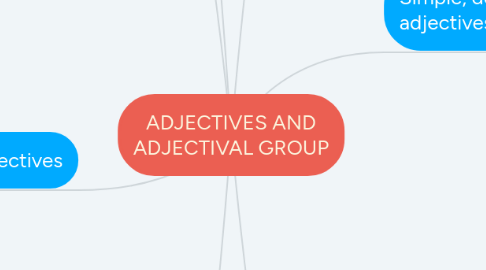ADJECTIVES AND ADJECTIVAL GROUP
by Thuy Sen Truong


1. Participial modifiers
2. Structure and characteristic uses of the adjectival group
2.1. Three structure elements
2.1.1. A head
2.1.2. A modifier
2.1.3. A post-head element
3. Simple, derived and compound adjectives
3.1. The most frequently used adjectives in english are monosyllabic or disyllabic words of native origin
3.2. Many adjecives are derived from nouns (sandy, milky)
3.3. Most adjectives prefixed are added to words which are already adjectives
3.4. Many adjectives have compound forms composed of various classes of word
3.5. Adjectives in english are invariable in form
4. Participles and participial adjectives
4.1. Participal adjectives commonly used as Verbal Group
4.2. Participial adjectives seldom used in VGs
4.3. Pseudo-participial adjectives
4.4. Compound forms
5. Semantic classes of adjectives
5.1. Descriptors
5.1.1. Size, weight, extend
5.1.2. colour
5.1.3. shape
5.1.4. meaning related to time
5.1.5. evaluative
5.1.6. an active or passive process
5.1.7. general qualities
5.1.8. a temporary state
5.2. Classifiers
5.2.1. Restrictive
5.2.2. relating to group
5.2.3. category-specific meanings
5.3. Degree emphasisers
6. Syntactic function of the adjectival group
6.1. AdjGs can realise functions in both group and clause structures
6.2. Stance Adjuncts make an evaluative comment
6.3. Detached predicatives are a type of supplementive unit
6.4. Adjectives as exclaimations can be considered as ellipted copula clauses
7. Central and peripheral adjectives
7.1. Central adjectives: decriptors
7.2. Predicative adjs only: afraid, asleep, etc.
7.3. Attributive adjs only: these can be grouped in to 5 types
7.3.1. Restrictive classifiers
7.3.2. Time/ space
7.3.3. Associative classifiers
7.3.4. Degree emphasisers
7.3.5. Process-oriented

